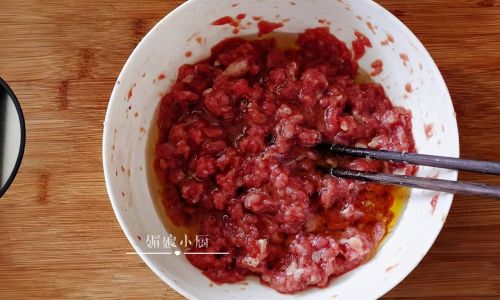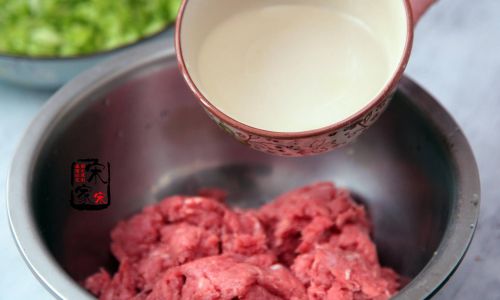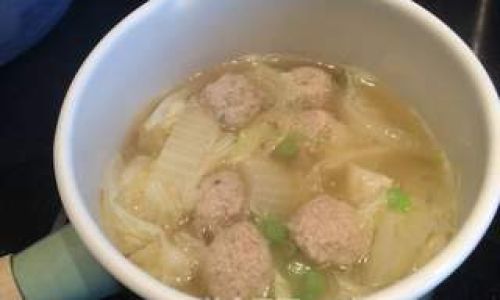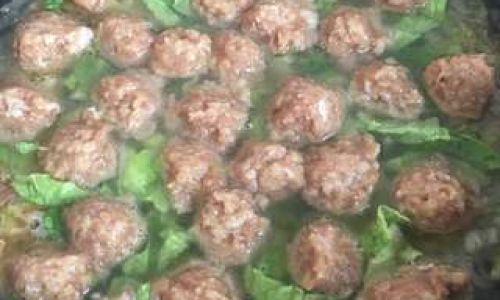Introduction

Preparing beef filling, whether for dumplings, burgers, meatballs, or other culinary delights, is an art that requires precision, patience, and a keen understanding of flavors. Seasoning beef filling correctly can elevate a dish from ordinary to extraordinary, transforming it into a mouthwatering experience that leaves a lasting impression. This comprehensive guide will walk you through the step-by-step process of how to season beef filling perfectly, ensuring that every bite is juicy, flavorful, and bursting with deliciousness.
Understanding Beef Quality
Before diving into the seasoning process, it’s crucial to start with high-quality beef. The type of beef you choose will significantly impact the final outcome of your filling. Here are some key considerations:
-
Grade of Beef: In the United States, beef is graded based on marbling (the amount of fat within the muscle), maturity, and firmness of the meat. Prime grade beef is the highest quality, with abundant marbling, followed by Choice and Select grades. For beef filling, aim for at least Choice grade for optimal flavor and tenderness.
-
Cut of Beef: Different cuts have varying levels of fat and muscle fiber, which affect texture and taste. Ground chuck and ground sirloin are popular choices for fillings due to their balance of flavor and fat content. Ground beef from the shoulder or round can also be used but may require additional fat to keep the filling moist.
-
Freshness: Always use fresh, properly stored beef. Frozen beef should be thawed slowly in the refrigerator to prevent moisture loss.
Basic Seasoning Principles
Seasoning beef filling is not just about adding salt and pepper. It’s about creating a harmonious blend of flavors that complement the beef’s natural taste. Here are some fundamental principles to guide you:
-
Balance: Ensure that your seasoning blend is balanced. Too much of any one ingredient can overpower the others, while too little can leave the filling tasting bland.
-
Contrast: Use seasoning ingredients that provide contrast in flavor profiles. For example, salty ingredients like soy sauce or Worcestershire sauce can be balanced with sweetness from brown sugar or honey, and acidity from vinegar or lemon juice can add brightness.
-
Aromatics: Aromatics such as garlic, onions, and shallots add depth and complexity to the filling. Fresh herbs like parsley, thyme, and rosemary can also elevate the flavor profile.
-
Fat and Moisture: Fat not only adds flavor but also keeps the filling moist during cooking. If using lean ground beef, consider adding some fat, such as beef tallow, butter, or even a small amount of oil, to prevent the filling from drying out.
Step-by-Step Seasoning Process
Now, let’s dive into the detailed step-by-step process of seasoning beef filling.
Step 1: Preparation
-
Chill the Ingredients: Start by chilling your beef and any mixing bowls or utensils you’ll use. Cold temperatures help keep the fat solid, making it easier to handle and mix without the filling becoming too loose.
-
Measure Ingredients: Have all your seasoning ingredients measured out and ready to go. This ensures that you can add them accurately and quickly, minimizing the risk of over-handling the beef, which can lead to toughness.
Step 2: Combine Base Ingredients
-
Beef and Fat: Place the ground beef in a large mixing bowl. If you’re adding additional fat, such as beef tallow or butter (softened), mix it in with the beef until evenly distributed.
-
Salt and Pepper: Season the beef with a generous amount of coarse sea salt and freshly ground black pepper. Salt draws out moisture from the beef, allowing the seasoning to penetrate deeper, while pepper adds a spicy, aromatic note.
Step 3: Add Aromatics and Extracts

-
Minced Garlic and Onions: Add finely minced garlic and onions (or shallots) to the beef. The ratio depends on your taste preference, but a good starting point is about 1 tablespoon of minced garlic and 1/4 cup of finely chopped onions per pound of beef.
-
Extracts: For an additional layer of flavor, consider adding a few drops of liquid smoke or beef extract. These ingredients provide a rich, savory depth that mimics the taste of slow-cooked beef.
Step 4: Incorporate Liquid Seasonings
-
Soy Sauce or Worcestershire Sauce: Add a few tablespoons of soy sauce or Worcestershire sauce to the beef. These condiments add saltiness, umami, and a hint of sweetness, enhancing the beef’s natural flavors.
-
Vinegar or Lemon Juice: For a tangy, refreshing note, add a splash of apple cider vinegar, rice vinegar, or lemon juice. This helps to balance the richness of the beef and keeps the filling tasting fresh.
Step 5: Add Binders and Moisture Retainers
-
Breadcrumbs or Panko: If you want your filling to hold its shape better (e.g., for meatballs), add a small amount of breadcrumbs or panko crumbs. Start with about 1/4 cup per pound of beef and adjust as needed.
-
Egg or Dairy: For added moisture and binding, incorporate one beaten egg or a small amount of milk or cream into the mixture. This helps to keep the filling tender and juicy during cooking.
Step 6: Flavor Enhancers
-
Brown Sugar or Honey: A pinch of brown sugar or a drizzle of honey can add a subtle sweetness that rounds out the flavors and helps caramelize the beef during cooking.
-
Herbs and Spices: Add your chosen fresh or dried herbs. Common choices for beef filling include parsley, thyme, rosemary, and oregano. For a spicy kick, consider adding a pinch of red pepper flakes or cayenne pepper.
Step 7: Mixing and Handling
-
Gentle Mixing: Use your hands or a spatula to gently mix all the ingredients together. Avoid over-mixing, which can cause the beef to become dense and tough. The goal is to evenly distribute the seasoning without compacting the meat too much.
-
Chilling: Once mixed, cover the bowl with plastic wrap or transfer the filling to an airtight container and chill in the refrigerator for at least 30 minutes. This allows the flavors to meld together and the fats to solidify, making the filling easier to handle and cook.
Step 8: Cooking Tips
-
Temperature Control: Cook the beef filling over medium-high heat to sear the exterior and lock in juices. Avoid overcooking, which can dry out the filling. For best results, use a thermometer to ensure the internal temperature reaches 160°F (71°C) for safety.
-
Moisture Management: If cooking in a pan, use a small amount of oil to prevent sticking and add a splash of broth or water if the filling starts to dry out. For oven-baked items like meatballs, use a baking sheet lined with parchment paper and a light drizzle of oil to keep them from sticking.
Conclusion
Seasoning beef filling perfectly is a blend of science and art, requiring an understanding of ingredient properties, flavor balance, and cooking techniques. By following the steps outlined in this guide—starting with high-quality beef, incorporating a balanced blend of seasonings, and handling the filling with care—you can create beef filling that is juicy, flavorful, and bursting with deliciousness. Whether you’re making dumplings, burgers, meatballs, or another culinary creation, your perfectly seasoned beef filling will be the star of the show, delighting your taste buds and impressing your guests.
Remember, cooking is a journey of discovery, so don’t be afraid to experiment with different seasoning combinations and cooking methods to find what works best for your palate. Happy cooking!






0 comments